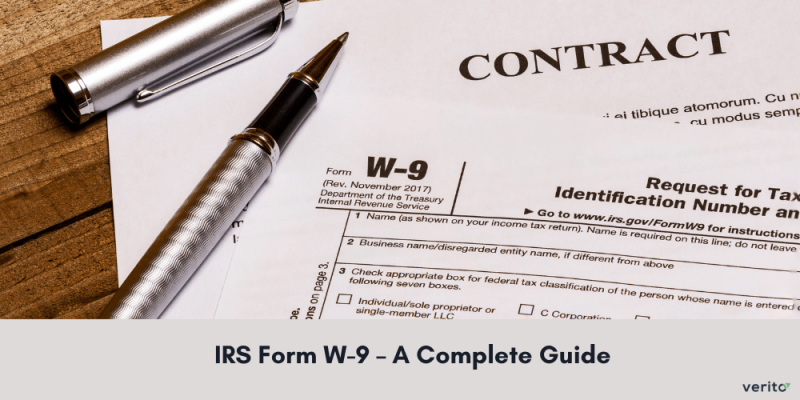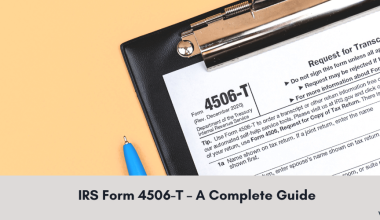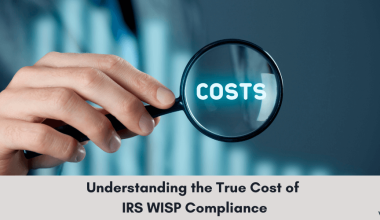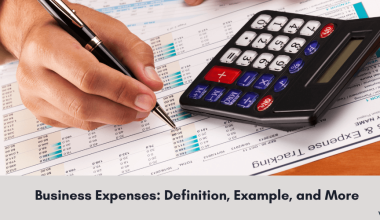In the world of finances and taxes, knowledge is power. If there is one document that holds significant weight, it is IRS Form W-9. Whether you’re a freelancer seeking work, a business owner hiring contractors, or an individual opening a bank account, understanding Form W-9 is a must. This seemingly straightforward form is quite important for collecting taxpayer information and facilitating various financial transactions.
In this guide, we’ll cover the importance of Form W-9 and various related aspects, such as how to file it, use cases, and more.
What is IRS Form W-9?
IRS Form W-9 is a formal written request for information used in the United States for tax purposes. It is officially titled ‘Request for Taxpayer Identification Number and Certification’. This form is typically provided by individuals or businesses to request taxpayer information from other individuals, businesses, or entities with whom they engage in financial transactions.
The primary purpose of Form W-9 is to collect the recipient’s taxpayer identification number (TIN), which can be either a SSN for individuals or an EIN for businesses. Additionally, Form W-9 certifies that the taxpayer’s information provided is accurate.
What are the Uses of IRS Form W-9?
Here are some common uses of Form W-9:
-
Hiring Independent Contractors
Businesses use Form W-9 to collect taxpayer information from independent contractors they hire. This includes freelancers, consultants, and other self-employed individuals who provide services to the company. IRS Form W-9 helps businesses comply with IRS reporting requirements and accurately report payments made to contractors.
-
Opening Bank Accounts
Financial institutions may require individuals or businesses to fill out Form W-9 when opening new bank accounts. This allows banks to collect taxpayer information to report interest income earned on the account to the Internal Revenue Service (IRS).
-
Processing Payments
Form W-9 is used by entities that make payments to individuals or businesses for goods or services rendered. By obtaining Form W-9 from payees, businesses can ensure they have the necessary taxpayer information to report payments accurately to the IRS and issue Form 1099-MISC or other tax documents as required.
-
Real Estate Transactions
In real estate transactions, Form W-9 may be used to collect taxpayer information from buyers, sellers, or other parties involved. This information is essential for reporting capital gains, rental income, or other taxable transactions to the IRS.
-
Investment Accounts
Investment firms may request Form W-9 from investors to collect taxpayer information for reporting investment income, dividends, or capital gains to the IRS.
How to Fill Out IRS Form W-9?
Here’s a step-by-step guide to completing Form W-9:
- Enter your full legal name on the ‘Name’ line as it appears on your tax return.
- If you are operating under a business name, enter it on the ‘Business name (if different from above)’ line.
- Provide your taxpayer identification number (TIN) in the appropriate section. For most individuals, this is their Social Security Number (SSN). For businesses, it is their Employer Identification Number (EIN).
- Select the appropriate federal tax classification applicable to you or your business. Options include – Individual/sole proprietor, C Corporation, S Corporation, Trust/estate, or Limited liability company.
- If you are exempt from backup withholding or are claiming exemption from FATCA reporting, enter the appropriate exemption codes in Part II of Form W-9.
- Sign and date the certification at the bottom of Form W-9 to certify that the information provided is accurate.
- Once completed, submit the signed Form W-9 to the requester who needs your taxpayer information for reporting purposes.Similarly know about
Who Needs to Complete Form W-9?
Individuals or entities that are requested to provide their TIN to another party for reporting purposes must fill out Form W-9. These may include:
- Individuals who provide services to businesses as independent contractors or freelancers
- Sole proprietors and business owners when conducting business transactions with other businesses or financial institutions (like opening bank accounts, processing payments, etc.).
- Entities such as partnerships, corporations, trusts, and estates that receive payments for goods or services rendered
- Financial institutions when opening new accounts or conducting certain transactions
- Parties involved in real estate transactions, including buyers, sellers, and other stakeholders
IRS Form W-9 vs. Form W-4: A Detailed Comparison
| Parameter | IRS Form W-9 | Form W-4 |
| Purpose | Collect taxpayer identification information for reporting purposes, such as reporting income or making certain financial transactions | Provide tax withholding preferences for employees to guide employers in calculating federal income tax withholding from paychecks |
| Information Collected | Taxpayer identification number (SSN or EIN), name, tax classification, exemption codes (if applicable) | Filing status, number of allowances, additional withholding amount, other income, deductions, and credits (if applicable) |
| Recipient | Payee or recipient of income or payments, including independent contractors, businesses, or entities receiving payments | Employee, provided to employer for tax withholding purposes |
| Usage | Used in various financial transactions, including hiring contractors, opening bank accounts, or processing payments | Used by employers to calculate federal income tax withholding from employee paychecks, ensuring accurate tax withholding throughout the year |
| Legal Requirement | Required for individuals or entities receiving payments to provide taxpayer identification information to payers | Required for employees to provide tax withholding preferences to employers as part of the employment process |
| Frequency of Updates | Typically filled out once for each payee or recipient, unless there are changes to the taxpayer’s information | Employees may update Form W-4 at any time if their tax situation changes, such as getting married, having children, or experiencing changes in income or deductions |
| Impact on Tax Liability | Does not directly affect the tax liability of the taxpayer, but provides necessary information for reporting income to the IRS | Directly impacts the amount of federal income tax withheld from employee paychecks, affecting their tax liability throughout the year |
FAQs
What is the use of IRS Form W-9?
The primary use of IRS Form W-9 is to collect taxpayer identification information from individuals or entities for reporting purposes. It is commonly used in financial transactions such as hiring independent contractors, opening bank accounts, or processing payments.
Who needs to fill Form W-9?
Form W-9 is typically filled out by individuals or entities who are requested to provide their TIN to another party for reporting purposes. Additionally, individuals or entities involved in financial transactions such as opening bank accounts or conducting real estate transactions may also need to fill out Form W-9 when requested by the payer.
Do self-employed individuals need Form W-9?
Yes, self-employed individuals often need to fill out Form W-9. When they provide services to businesses as independent contractors or freelancers, they are typically asked to complete Form W-9 by the payer.
What can happen on not providing the IRS Form W-9?
For individuals or entities receiving payments, not providing Form W-9 may result in backup withholding, where the payer is required to withhold a percentage of payments made and remit it to the IRS. Additionally, failure to provide Form W-9 may lead to delays in processing payments, potential legal penalties, or difficulties in completing financial transactions. Complying with requests for Form W-9 can help avoid these consequences.















1 comment
Comments are closed.